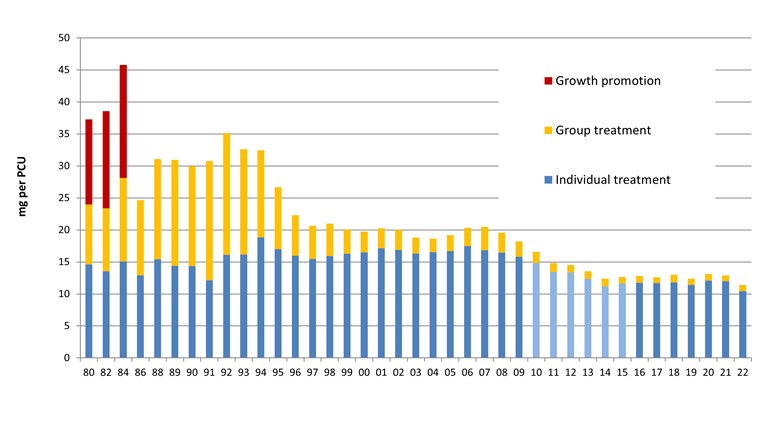
Swedish work against antibiotic resistance
Work against antibiotic resistance is conducted with a One health approach. There is a national consensus among stakeholders from all relevant sectors on the overarching goal of preserving the possibility of effective treatment of bacterial infections in humans and animals. This is reflected in the common priorities of the Swedish government and governmental agencies, as well as organisations within the healthcare sector, veterinary medicine, animal husbandry and the food production.
There is a long-term government strategy as well as a national action plan against antibiotic resistance. The latter is evaluated and updated by the intersectoral coordinating mechanism. This group engages governmental agencies and organisations working in human health, animal health, food, environment, research, trade and civil contingency planning.
Key components in the Swedish One health work against antibiotic resistance
- Continuous work, with political and legislative support
- Consensus and cooperation locally, regionally, and nationally, within and between sectors
- Disease prevention – healthy people and animals do not need antibiotics
- Transparent and reliable data for action and follow-up
- Active involvement in international efforts
Focus on animals
Early awareness and action
In 1980, the Federation of Swedish Farmers adopted a sector wide policy on antibiotic use. The policy aimed for a more controlled use of antibiotics, with a strong focus on prevention of diseases. Since 1986, the use of antibiotics for growth promotion is no longer authorised. Following this change, an increase in health disturbances was noted, and efforts to implement preventive strategies were strengthened. Over time, the need to use antibiotics to treat infections has declined.
Preventing infections and spread of resistance
Sweden has a long tradition of control of infections in animals. Since 2008 certain types of resistance are also notifiable which allows for monitoring of trends and follow-up. Disease control programmes create incentives for the introduction of biosecurity measures at the farm level and in trade. Today, biosecurity programmes are run by animal health service organisations.
Preventing the spread of animal diseases and zoonotic pathogens also has an impact on food safety and the environment and is therefore an important safeguard to human health. Advice on disease prevention is available through organised animal health services. These organisations also provide a vital link between authorities and academia on one side, and practicing veterinarians and farmers on the other.
A national regulation on infection prevention and control (IPC) was introduced in 2014 stipulating that all veterinary practices must have an IPC programme. The implementation of this regulation was supported by expertise from the human health sector. Comprehensive guidance was established on how to develop an IPC-programme as well as practical aspects, such as hand washing, disinfection, clothing and cleaning.
Prudent use of antibiotics
The use of antibiotics is governed by Regulation (EU) 2019/6 on veterinary medicinal products, and by complementing national regulations. National regulatory agencies are the Medical Products Agency, the Board of Agriculture and the National Food Agency. Antibiotics for animals are only available on prescription and can only be sold by pharmacies. Current regulations on the use of antibiotics are in line with the guidance on prudent use: antibiotics should only be used when needed and the risk of resistance should be considered when prescribing.
Guidelines for use of antibiotics for different animal species have been issued by the Medical products agency and by the Swedish veterinary association. The two sets of guidelines supplement each other. Links to all guidelines (in Swedish) are available on our Swedish webb .
Access to data
Data on sales of antibiotics for animals has been available since 1980. After the ban on antibiotics for growth promotion, there was a strong focus on reducing the need to medicate groups of animals. The quality of prescribing has improved, and today most animals are treated individually. Additionally, narrow-spectrum penicillins are the most prescribed antibiotics.
The Svarm programme, a formalised monitoring of sales of antibiotics and resistance, was initiated in 2000. The programme includes resistance of potential significance for public health, but also resistance in animal pathogens. The programme Svarmpat supplements Svarm with data on antibiotic resistance in pathogens of farm animals. Results in the monitoring are reported in English in the reports Swedres-Svarm, jointly published by SVA and the Public Health Agency of Sweden. The Swedish Board of Agriculture also publishes a report in Swedish with statistics on sales of veterinary medicines, including antibiotics.